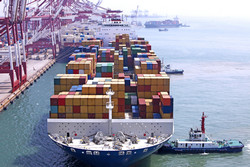Innovative docking tool offers cargo shipping less risk and greater efficiency
The EU-funded DOCKINGMONITOR project, which was completed in August 2015, has improved automated port safety systems by combining a berthing aid with a drift monitoring system. Drift monitoring involves measuring the movement of a ship along a jetty during cargo transfer. The berthing aid uses high-end laser distance measurement and image processing and sends an alarm signal in the event of collision danger. The ability to efficiently and accurately measure drift along the jetty during cargo transfer is a feature that is currently not directly available today. Major logistics companies, harbour operation managers and oil and gas companies stand to benefit from this innovation. The berthing of large ships – especially those laden with oil or natural gas – can be fraught with danger. Excess speed upon approach to a jetty can cause damage to the structure, fenders and ship hull. Each year, a considerable amount of money is spent on repairing damaged ships and mooring facilities due to ships accidently running into the jetty. Furthermore, injuries from mooring accidents can be very serious and sometimes fatal. The consequences of an oil spill during the loading and unloading of oil and natural gas, in most cases caused by excess movement of the ship while moored, can also be serious. These types of spills are responsible for many small and medium-sized oil spills that occur, and can cost the oil and gas industry millions ever year. The reputational harm caused by oil spills is another significant burden on the sector. At the same time, the number of oil jetties around the world has increased, while demand for more jetties dedicated to natural gas continues to grow. This implies a clear need to improve harbour operational safety, and also represents a business opportunity, as identified by the DOCKINGMONITOR consortium. The project’s combined berthing aid and drift monitoring system is based on high-end laser distance measurement and image processing which significantly improve port safety automation. Data from the system can be transmitted to displays, PCs and handheld devices while the integrated alarm system alerts jetty and ship crew if there is potential danger. In order to develop the drift new system, the team analysed various motion measuring algorithms and selected the most suitable. After acquiring the necessary lighting and optical equipment, researchers conducted performance tests with a robot system and dummy hull. More realistic trials were also conducted at the Port of Oslo using a 3D scanner. The original aim – the measurement of longitudinal movement of a moored ship with an uncertainty smaller than 10 millimetres a second – was achieved. The DOCKMONITOR project brought together expertise from a range of disciplines and sectors. Close cooperation between researchers involved in machine vision programming, laser technology, control electronics and automation, along with jetty owners and shipping experts, will help ensure that project results are brought to market. For further information, please visit: DOCKINGMONITOR project website
Countries
Norway



